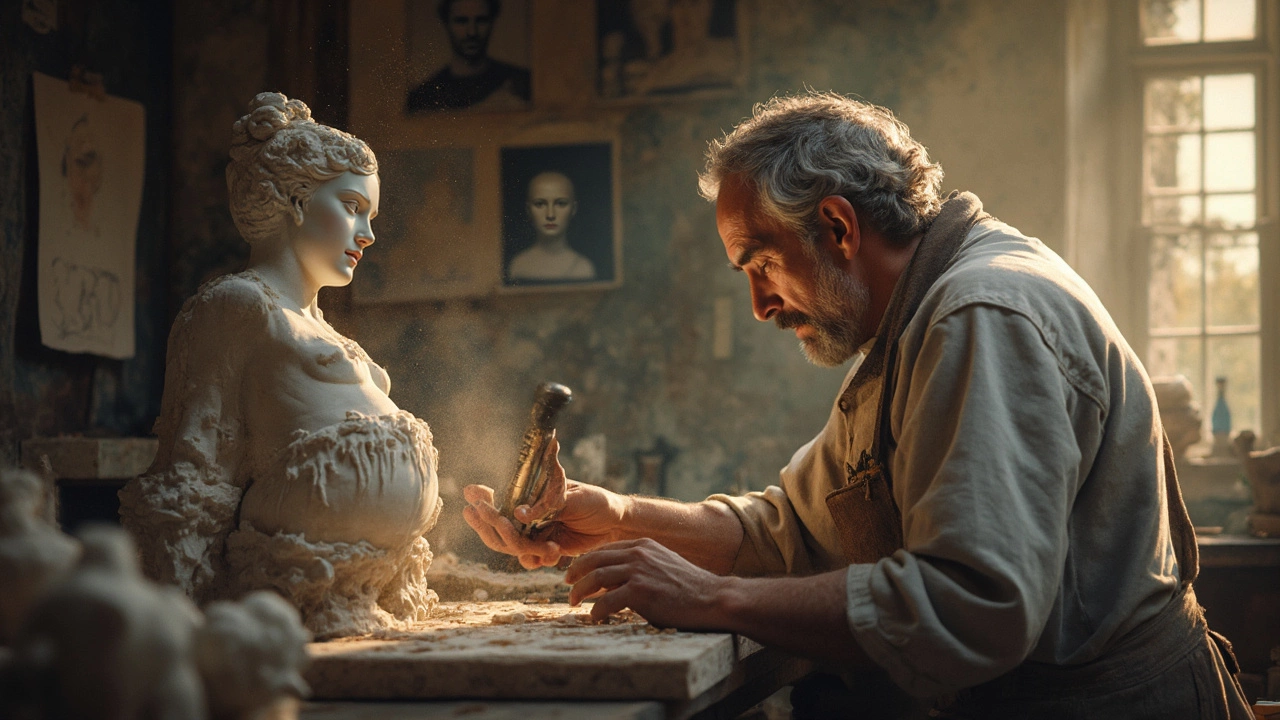Carving Basics & Ideas for Beginners
Got a piece of wood or a soft stone and an urge to shape it? Carving is all about turning a raw material into something you can hold and admire. You don’t need a workshop full of fancy gear – just a few tools, a clear plan, and some patience.
Getting Started with Carving
First thing: pick a material that’s forgiving. Bass wood, pine, or soft limestone are perfect for newcomers because they give a clean cut and don’t splinter too much. Grab a simple whittling knife or a gouge, and practice basic cuts on a scrap piece. The goal is to feel the resistance and learn how the tool reacts.
Sketch your design directly on the material. Use a pencil or charcoal to outline the main shapes. This step saves you from guessing later and helps you keep proportions right. When you’re ready, start removing the big chunks – think of it as roughing out a silhouette before you add details.
Tools & Techniques for Better Results
Even a basic set can do wonders if you use it right. A carving knife works for shallow cuts and fine lines, while a curved gouge is great for hollows and rounded forms. Keep your tools sharp; dull blades slip and can ruin the surface. A simple sharpening stone or a leather strop does the trick in minutes.
Try the “push‑cut” method first: press the tool away from you and control the depth with gentle pressure. For deeper cuts, switch to a pull‑cut – pull the tool toward you, which lets you see the grain more clearly and reduces the chance of breaking the tip.
Safety matters. Carve on a stable surface, wear a glove on the hand holding the material, and keep a scrap piece under the work to catch stray chips. A small piece of soft wood as a backing board also reduces vibration and helps you stay precise.
Once the basic shape is done, move to detailing. Use smaller chisels or a detail knife to carve texture, like bark on a tree trunk or muscle lines on a figurine. Take your time – a few light passes are better than one heavy scrape.
Finishing is the final fun part. Sand the piece with progressively finer grit paper, then apply a light oil or beeswax to bring out the grain. If you’re working with stone, a mild stone sealer will protect the surface without changing its natural look.
Want more project ideas? Start with simple items like a spoon, a decorative box, or a small animal figure. Those projects teach you how to manage proportion, depth, and finishing without overwhelming you.
Remember, carving improves with every cut. Don’t be afraid to make mistakes – each slip teaches you how the material reacts. Keep a sketchbook of your designs, note which tools work best for each shape, and you’ll see steady progress.
Ready to carve? Grab a piece of pine, a trusty knife, and start shaping. The satisfaction of turning a raw block into something unique is worth every small effort you put in.

7 Mar 2025
A sculptor is a skilled artist who molds materials like stone, wood, or metal into stunning three-dimensional forms. Focusing on both traditional and modern techniques, sculptors can transform rough materials into art that evokes emotion and inspires imagination. Learn about the tools of the trade, the creative processes involved, and interesting facts like how ancient sculptors shaped masterpieces before modern technology. Whether you're an aspiring artist or simply curious, dive into the world of sculpture to appreciate the hardship and creativity involved in this timeless craft.
Continue reading...
